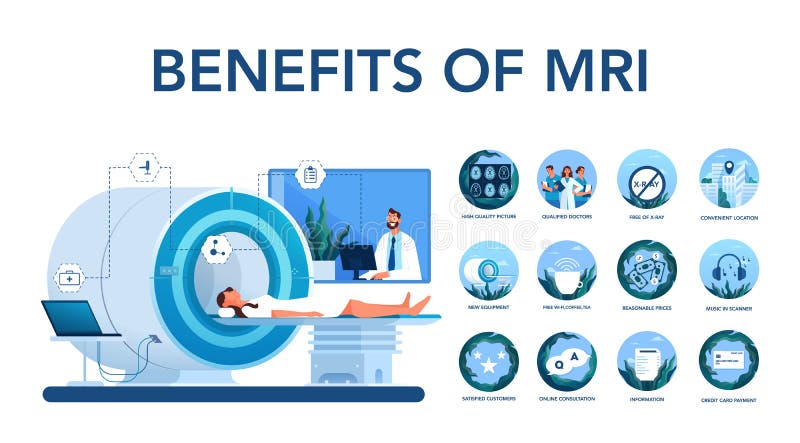Magnetic Resonance Imaging (MRI) has revolutionized the field of medical diagnostics with its numerous benefits.
This non-invasive imaging technique offers improved diagnostic accuracy MRI compatible fire extinguisher, allowing healthcare professionals to detect hidden injuries or conditions that may have otherwise gone unnoticed.
MRI also plays a crucial role in monitoring treatment progress, reducing the need for invasive procedures.
This article explores the various benefits of MRI, providing a comprehensive understanding of its significance in modern healthcare.

Improved Diagnostic Accuracy
Improved diagnostic accuracy is one of the key advantages associated with the use of MRI technology.
MRI, or magnetic resonance imaging, is a non-invasive imaging technique that uses powerful magnets and radio waves to generate detailed images of the body’s internal structures. This technology allows for a more accurate and precise diagnosis of various medical conditions and diseases.
One of the factors contributing to improved diagnostic accuracy is the increased patient comfort offered by MRI scans. Unlike other imaging techniques X ray warning light, such as CT scans, MRI scans do not use ionizing radiation, which can be unsettling for some patients. Additionally, MRI machines are designed to provide a more spacious and comfortable environment, reducing anxiety and ensuring a more relaxed patient experience.
Furthermore, advancements in MRI technology have led to shorter scan times. In the past, MRI scans could take several hours to complete, causing discomfort and inconvenience for patients. However, with the development of faster imaging sequences and improved hardware, scan times have been significantly reduced. This not only improves patient comfort but also allows for more efficient utilization of the MRI equipment, enabling healthcare providers to accommodate more patients and reduce waiting times.
Non-Invasive Imaging
Non-invasive imaging techniques, such as MRI, provide a detailed and accurate visualization of anatomical structures without the need for invasive procedures or ionizing radiation. This makes MRI an invaluable tool in modern medicine.
One of the key advantages of non-invasive imaging is the ability to obtain high-resolution images of internal organs and tissues. MRI can capture detailed images of the brain, spine, joints, and other body structures, allowing for the detection of abnormalities, such as tumors or injuries.
Moreover, the non-invasive nature of MRI means that patients experience minimal discomfort and risk during the procedure. MRI has a wide range of applications, including diagnosing and monitoring diseases, guiding surgical procedures, and monitoring the effects of treatment.
Its versatility and accuracy make MRI an essential tool in providing optimal patient care.
Detection of Hidden Injuries or Conditions
Hidden injuries or conditions can be detected using non-invasive imaging techniques, such as MRI, which provide detailed and accurate visualization of internal structures without the need for invasive procedures or ionizing radiation.
This advanced imaging modality plays a crucial role in the early intervention and comprehensive evaluation of various medical conditions. MRI enables healthcare professionals to identify and assess hidden injuries or conditions that may not be apparent through physical examination alone.
By capturing high-resolution images of soft tissues, organs, and bones, MRI allows for the early detection of abnormalities, enabling prompt treatment and improved patient outcomes.
Furthermore, MRI provides a comprehensive evaluation of the extent and severity of injuries or conditions, aiding in the development of personalized treatment plans and monitoring the effectiveness of interventions.
With its non-invasive nature and ability to provide detailed insights, MRI is a valuable tool in the detection and management of hidden injuries or conditions.
Monitoring Treatment Progress
Regular monitoring of treatment progress is essential for evaluating the effectiveness of interventions and making informed adjustments to the patient’s care plan. Tracking changes in the patient’s condition allows healthcare professionals to assess the impact of the chosen treatment and determine whether any modifications are necessary.
By closely monitoring treatment effectiveness, healthcare providers can ensure that patients receive the most appropriate and beneficial care. This process involves regularly assessing the patient’s symptoms, conducting tests, and analyzing data to measure the progress made.
Through meticulous observation and data analysis, healthcare professionals can identify any improvements or setbacks in the patient’s condition and adjust the treatment plan accordingly. This approach ensures that patients receive personalized and effective care, leading to better health outcomes and a higher quality of life.

Reduced Need for Invasive Procedures
Innovations in medical technology have led to a decreased reliance on invasive procedures, allowing healthcare professionals to explore alternative, less invasive methods for diagnosing and treating patients.
One significant advancement in this regard is the use of magnetic resonance imaging (MRI). MRI scans provide detailed images of the internal structures of the body without the need for surgical intervention.
This not only reduces the cost associated with invasive procedures but also enhances patient comfort. Unlike invasive procedures, which often require anesthesia and recovery time, MRI scans are non-invasive and painless. Patients can simply lie down on a table and be scanned using magnetic fields and radio waves.
The images produced by MRI scans are highly accurate and enable healthcare professionals to make informed decisions regarding patient diagnosis and treatment, all while minimizing the need for invasive procedures and their associated risks.
Conclusion
In summary, MRI provides numerous benefits in the field of medical imaging. Its improved diagnostic accuracy enables healthcare professionals to make more precise diagnoses, leading to better treatment outcomes.
Additionally, its non-invasive nature minimizes patient discomfort and reduces the risk of complications. MRI also plays a crucial role in detecting hidden injuries or conditions that may otherwise go unnoticed.
Furthermore, it allows for the monitoring of treatment progress, ensuring timely and appropriate interventions. Ultimately, MRI technology has greatly reduced the need for invasive procedures.





